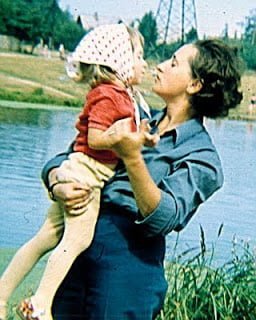My friend, Nika, recently asked me a question: “My three-year-old daughter, Lisa, goes to sleep relatively easily, but I always lie down next to her until she falls asleep. This practice used to be okay with me. I started it when she was a baby when I needed a nap too, but now I would like to change that. What do I do? It is a priority for me to make sure falling asleep will be a positive experience in her life. Also, I want to make this change in a respectful way.”
I wrote a plan for Nika. Before you embark on changing your child’s sleep routine, consider these steps:
1. Make the Decision
It’s crucial to decide firmly that you are going to change the routine and believe it’s beneficial for both you and your child. It’s good for her because she’ll learn to sleep independently and soothe herself.
2. Revisit Your Daily Routine
Spend quality time during the day in your child’s room, playing together, reading, or simply sitting and watching your child play. This can help her feel more comfortable and happy in her room.
3. Evaluate Timing
Avoid introducing changes when you are traveling or have house guests. Aim for a stable and peaceful household environment.
4. Get a Comforting Toy
Provide a soft and comfortable toy for your child to sleep with. It could be a new or beloved toy, like a teddy bear that needs a big hug to feel cozy and comfortable.
5. Establish a Sleep Routine
Create a consistent bedtime routine, such as closing windows, tucking in dolls, reading goodnight stories, giving three kisses on the cheeks, and one blown kiss. Consistency makes it easier for your child to adapt.
6. Share Information
Explain the upcoming changes to your child on the same day you plan to try the new routine. Keep it simple: “I know you’re used to falling asleep when I’m next to you. It’s time to learn to fall asleep on your own. I will put you to bed, read a story, and then lie down with you for a little bit. After that, I will go clean up the kitchen.”
7. Help the Child Process
During the day, role-play the new routine with a doll to show your child what will happen.
8. Create a Social Story
Make a book using photos of your child to depict the sleep routine, possibly including the waking routine as well.
9. Start Softly
On the first day of the change, stay close a little longer until your child is almost asleep, but not fully asleep. This helps create a memory of you leaving rather than waking up alarmed that you’re not beside her.
10. Change the Hand-Holding Habit
While many children like to hold their parent’s hand as they fall asleep, it’s better to change this habit. Instead, if she wants to hold your hand, gently pat her on the back or stroke her forehead.
11. Vary the Rhythm
Avoid patting, stroking, or singing too steadily; change the rhythm at times. This prevents your child from anticipating when you will stop, which can cause anxiety.
12. Don’t Sneak Out
Make the last movement more pronounced, signaling that you’ve finished helping her settle down. You’re not trying to sneak out. You can also use a certain song as a signal that you’re about to depart.
13. Be Prepared
Expect that in the first few days of these changes, your child may get up or call for you. Gently take her back to her room and minimize talking. You can say, “If you come out of your room to get me, I will bring you back here silently.”
14. Understand It Takes Time
Mark the first day of the new routine on the calendar and be prepared for the fact that forming a new habit may take at least a few months.
15. Show Empathy
Demonstrate empathy through touch, hugs, and a caring tone of voice, but keep talking to a minimum. Acknowledge her feelings with a simple statement like, “I see you want me to sleep with you…”
16. Recognize Progress
When you notice even slight changes in the routine, acknowledge them: “I noticed that today, after we read the story and I lay down with you for a bit, you stayed in bed by yourself.”
17. Stay Calm
Try to remain calm and not show anxiety or expectation of her crying.
18. Discuss It
Consider discussing the changes with your child the next day: “Lisa, you’re learning to fall asleep by yourself. It’s new, and it seems you’re not sure about the new arrangements. I know you can handle it, and I’ll be right here.”
This method can help your child slowly adjust to the new routine, create new habits, and discover self-soothing techniques.
Let me know if you need more information about RIE® Parent-Infant Guidance™ Classes.
Wishing you all the best in this difficult yet exciting journey of parenting!
Warmly,
Teacher Kira






